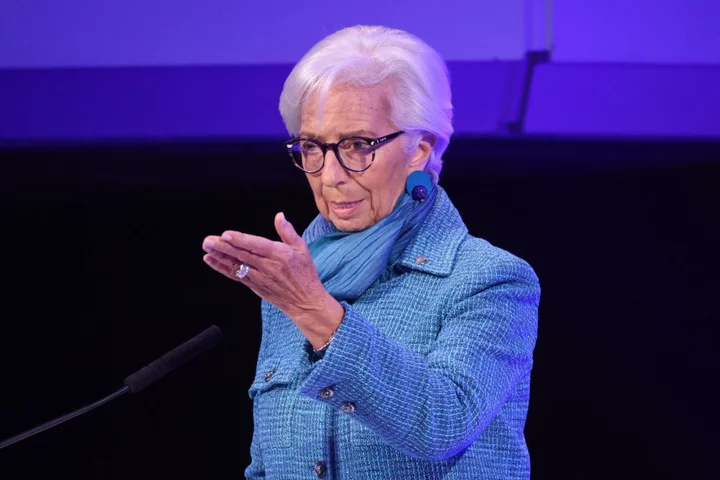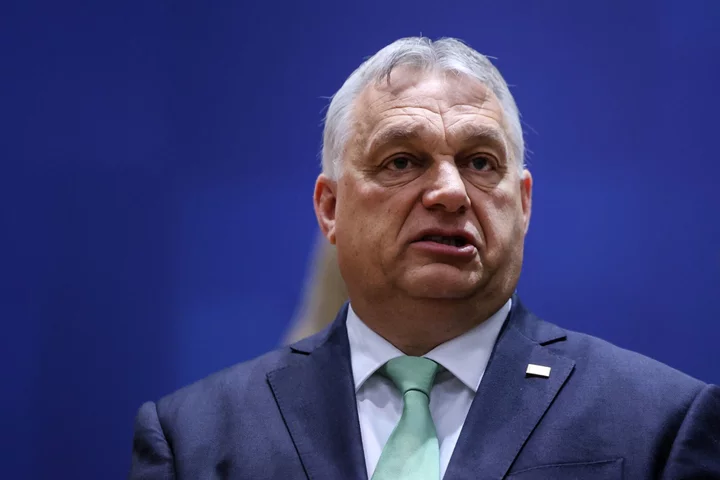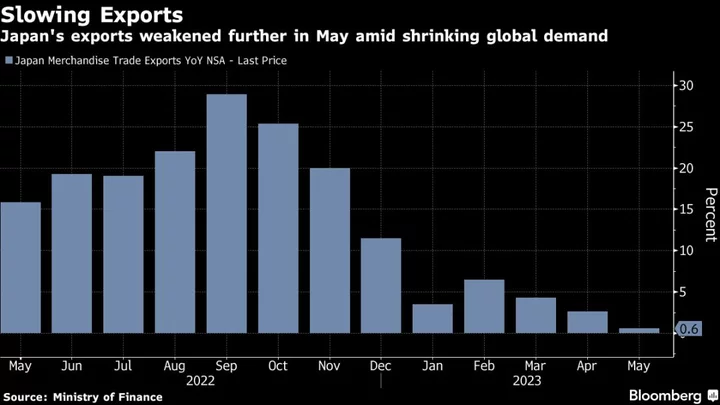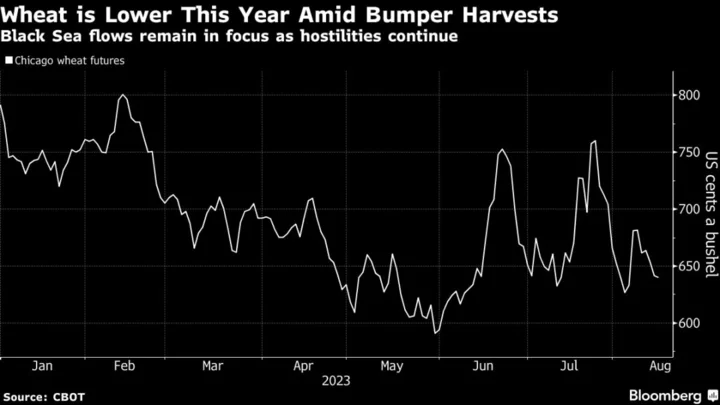Europe’s sputtering economy is causing traders to bet on a faster pace of interest rate cuts next year.
For the first time, money markets have priced in a full percentage point of interest-rate cuts in 2024. Just two months ago, the expectation was that the European Central Bank would deliver a 75 basis-point decrease, according to swaps pricing tied to central bank meeting dates.
The latest leg of the repricing comes as UK retail sales unexpectedly fell in October and US data shows inflation is slowing. Oil’s descent into a bear market has also reignited worries about a recession as higher interest rates squeeze household spending. Traders are also anticipating 100 basis points of cuts by the Federal Reserve next year.
For now, markets are focusing on the likelihood of lower rates instead a weaker economy. Germany’s 10-year yield has fallen almost 20 basis points this week to about 2.52% and the Stoxx 600 Index is approaching a one-month high.
Read More: ECB’s Villeroy Says Slowing Inflation Justifies Halting Hikes
Even so, policymakers have repeatedly said it’s too early to start thinking about loosening monetary policy and plan to keep rates high for an extended period. But as evidence builds that an aggressive string of rate hikes is starting to take a toll on the economy, the market is proving hard to convince.
ECB policymakers have begun to debate the timing of potential rate cuts, though even that discussion has incited some pushback. Greek central bank Governor Yannis Stournaras has said that officials could consider easing in the second half of 2024, though his German colleague, Joachim Nagel has vehemently pushed back on that prospect.
“I don’t like this discussion going on about when will be the point you lower interest rates,” the Bundesbank president said last week. “This discussion is not helpful it is much much too early.” Nagel is scheduled to speak again later on Friday.
For her part, Lagarde said last week that any such reduction isn’t going to happen “in the next couple of quarters,” adding that “long enough is long enough.” She omitted the topic in her speech in Frankfurt on Friday.
As traders around the world pull forward the timing of rate cuts, it’s causing some unusual market dynamics, according to Steven Barrow, head of G-10 strategy at Standard Bank. Swaps pricing suggests that there’s a high probability that the Fed will start cutting rates from May, with the ECB following suit a month later and the BOE starting in August, he said.
“We think it is wrong,” Barrow wrote in a note on Friday. “We find it strange that the market prices such an early Fed move when the economy is so much more robust than that we see in Europe.”
In his view, the Fed will hold off on rate cuts until the third quarter, while the ECB and BOE may act in the second quarter.
--With assistance from James Hirai, William Horobin, Sonja Wind, Alexander Weber and Craig Stirling.
(Updates with ECB speakers and context from Standard Bank analysis)









